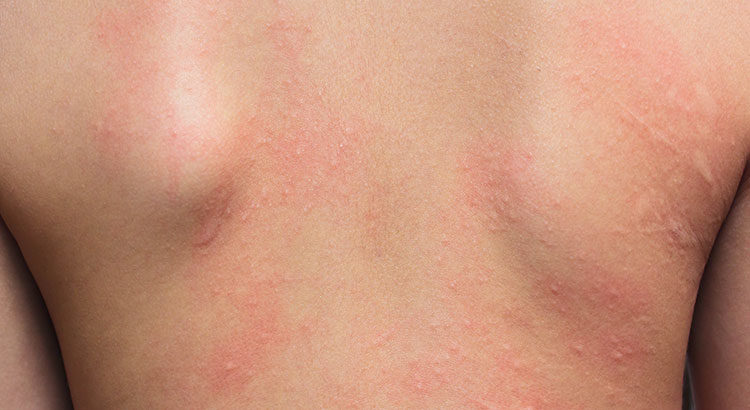Psoriasis is a painful skin disease that changes the life cycle of skin cells. Its life is speeded up so that it builds up rapidly and forms scales on the surface of the skin. These scales are red in color and itchy in nature. Psoriasis is a chronic disease that appears at times and vanishes at other times. There are no real cures for psoriasis. You can only control their symptoms by life style changes like quit smoking and managing stress.
Different persons with psoriasis feel different symptoms and signs. Most common symptoms are detailed below.
- Skin with red patches covered with silvery scales
- In children small scale spots are seen
- Bleeding form cracked and dry skin
- Ridged or thickened nails
- Burning soreness or itching
- Stiff and swollen joints
Patches of psoriasis may vary from a few spots of scaling similar to dandruff to large areas of major eruptions. Psoriasis usually go through cycles which consists of a few weeks or months of flaring followed by a subsiding time that may even go for complete recession. There are many types of psoriasis. Some of them are discussed below.
- Plaque psoriasis: This is a very common form of psoriasis in which raised dry skin lesions with silvery scales appears. There can be few or many plaques which are itchy and painful. This may appear anywhere on patient’s body including genitals and inside of the mouth.
- Nail psoriasis: This type of psoriasis pertaining to nails appears on finger nails or toe nails. Abnormal nail growth and discoloration and pitting are common in this type of psoriasis. In this disease the nail may separate from the nail bed and the nails may crumple also.
- Guttate psoriasis: This type of psoriasis is primarily found in youth and children. It is characterized by bacterial infection like strep throat and is marked by water-drop-shaped lesions seen on the trunk, arms, scalp, legs etc. These lesions are covered by scales that are not as thick as usual plaques. This may appear, stay for some time and may re appear or vanish all of a sudden.
It is seen that psoriasis often is triggered by some factors which can be identified and avoided to keep oneself safe form this disease. Some of them are detailed below.
- Infections like strep throat and or other skin infections
- Stress
- Smoking
- Injury to skin like bug bite, cut, scrape, a severe sunburn etc.
- Alcohol consumption
- Certain medications
- Deficiency of vitamin D
Risk factors
- Family history
- Bacterial or viral infections
- Smoking
- Stress
- Obesity


